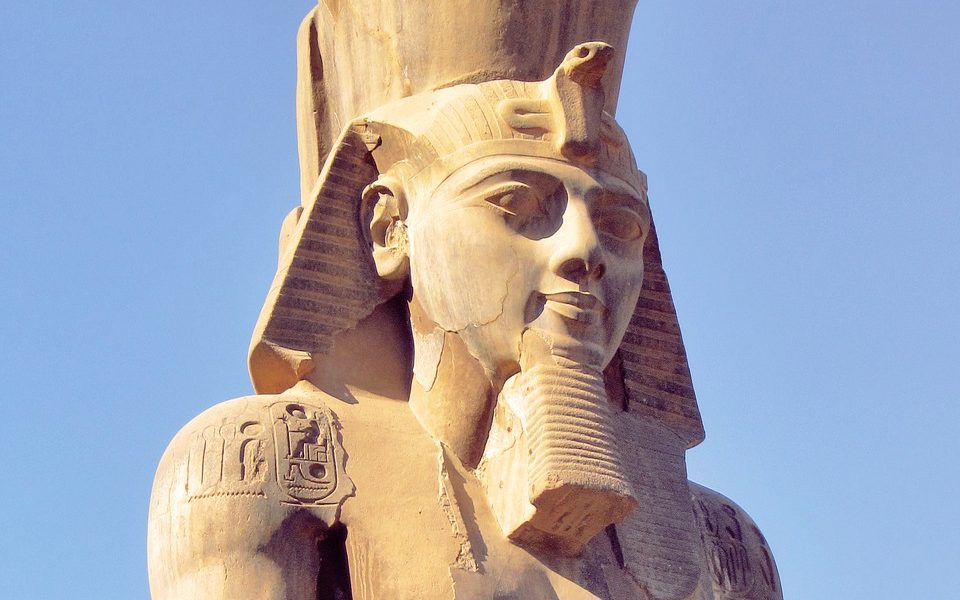Ramses II
Also referred to as Ramesses the Great, he was the third pharaoh of the 19th Dynasty rulers (r. 1279 – 1213 BC).It is the most famous and powerful pharaoh throughout the reign of the Egyptian Empire.They called the Grandfather. Ramses II led several military campaigns to the Levant and restored Egyptian control of Canaan.He also led expeditions south to Nubia, where two of his sons went with him as observed on the walls of the temple of the Governor.
History of the King Ramses
Also referred to as Ramesses the Great, he was the third pharaoh of the 19th Dynasty rulers (ruled 1279 – 1213 BC).
It is the most famous and powerful pharaoh throughout the reign of the Egyptian Empire. They are called the Grandfather. Ramses II led several military campaigns to the Levant and restored Egyptian control of Canaan. He also led expeditions south to Nubia, where two of his sons went with him as observed on the walls of the temple of the Governor. At the age of 14, Ramses was a crown prince by his father, Seti I. He believed to have sat on the throne in his late teens. He ruled Egypt from 1279 BC to 1213 BC for a period of 67 years, and two months. According to both Maniton and contemporary historical records of Egypt.
He was buried in a tomb in the Valley of the Kings; his body was later transferred to the royal cache where it was discovered in 1881 and is now on display at the Egyptian Museum.
The first period of his rule centered on the construction of cities, temples, and monuments. He founded the city of Be Ramses in the Nile Delta as his new capital and the main base of his campaigns in Syria. This city was built on the ruins of the city of Oris, the capital of the Hyksos when he took power and was the site of the main temple of the group. It is also known as Osimandis in Greek sources.
Ramses II Family
Ramses II was the son of Pharaoh Seti I and Queen Toya, nicknamed the co-ruler of his father. He accompanied his father during his military campaigns on Nubia, Levant, and Libya at the age of fourteen. Before the age of 22, he was leading the campaigns himself to Nubia with his children. Ramses was appointed in extensive renovation projects and the construction of a new palace in Ouris .
After the death of Seti I in 1290 BC, Ramses took power. Ramesses II ruled for nearly 67 years and married many women, and also gave birth to many concubines and secondary wives.
He married some princesses of the royal family such as Nefertari and Est Nefert, and he married the daughter of King Khita and dubbed the Egyptian name “Maat Nefro-Re”, also knows that he married three of his daughters.
His male children held important positions in the state, the most important of which was his son, Khamwas, whose father in the thirtieth year of his reign considered him crown prince, but died in the 55th year of his father’s reign. Most of his first sons died in his life, so his 13th son, Merenptah, succeeded him from his wife, Est Neferth, on the throne.
Achievements of Ramses The Great
Ramses II has many achievements in the first phase of his rules, such as the construction of cities, temples, and many important monuments. as well as the establishment of the city of Ramses in the Nile Delta, as the capital of his country and as the main base for the campaigns he will launch on Syria, and this city was built on the remains and ruins of the city of ” Oris” is the official capital of the Hyksos.
Ramses II Temples Abu Simbel located in the belly of the mountain south of Aswan.
It consists of two large temples carved in the rock. It was built by King Ramses II in 1250 BC.
The facade of the temple consists of four large statues of the king’s statue 67 feet (20 meters) high and a door leading to rooms 180 feet long. There are six statues at the entrance to the other temple, four for Ramesses II and two for his wife, Nefertari.
Tour to Abu Simbel temple from Aswan




